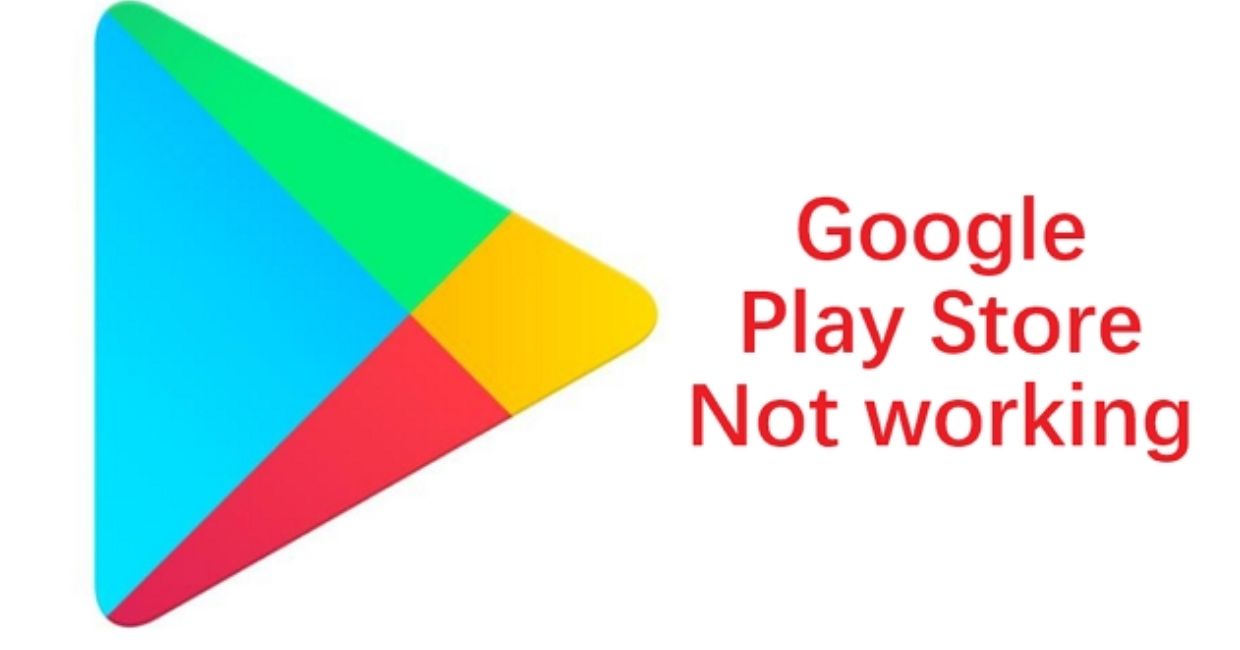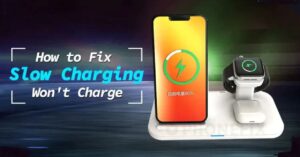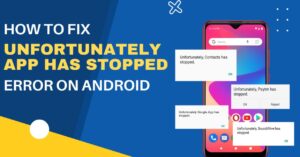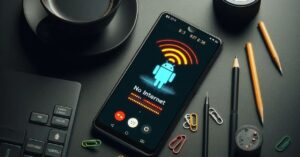Fix Google Play Store Not Working on Android: A Complete Guide

Google Play Store
The Google Play Store is the backbone of the Android ecosystem. It allows users to download apps, games, movies, books, and more. However, there are times when it simply refuses to work. Whether it’s not opening, crashing, stuck on downloading, or giving error messages, a malfunctioning Play Store can be extremely frustrating.
If you’re facing issues with the Google Play Store on your Android device, you’re not alone. Fortunately, there are several tried and tested solutions to get it up and running again. In this detailed guide, we’ll walk you through how to fix the Google Play Store not working on Android—step-by-step.
New iPhone Features You Should Try Today
Why Is Google Play Store Not Working?
Before diving into the solutions, it’s essential to understand the underlying reasons that can cause the Google Play Store to stop working. Several factors—ranging from simple connectivity issues to deep-rooted system problems—can interrupt its functioning. Understanding these causes can help you troubleshoot more efficiently and avoid repeating the same issue in the future.
Here’s a deeper look at each potential cause:
1. Poor or Unstable Internet Connection
The Play Store relies on an active and stable internet connection to function properly. If your Wi-Fi or mobile data is slow, fluctuating, or dropping out entirely, it can prevent the app from:
- Loading content
- Verifying your Google account
- Downloading or updating apps
- Syncing with Google servers
In some cases, certain apps may appear to “hang” on the download screen, or you may get error messages like “No connection” or “Retry”. A simple test is to open a browser and try loading a few websites or using a speed test app.
2. Incorrect Date and Time Settings
Google’s services are extremely time-sensitive. If your device’s clock is significantly out of sync with real-time, it can interfere with authentication, app updates, and downloads.
This can result in:
- Sync errors
- Trouble connecting to the Google servers
- Failed verification of app licenses or downloads
Often, users who have manually set their date/time for time zone spoofing or travel purposes experience this issue.
3. Full Cache or Corrupted App Data
Over time, the Play Store and associated Google services collect cached data to improve performance. However, if this data becomes corrupted or bloated, it can cause the app to:
- Crash on launch
- Freeze mid-use
- Display outdated content
- Refuse to update or install new apps
This is one of the most common causes of the Play Store malfunctioning. Regularly clearing cache and data is a healthy maintenance habit for your Android device.
4. Outdated Version of the Play Store
Although the Play Store typically updates itself in the background, sometimes these updates fail to install properly. Using an outdated version might cause:
- Compatibility issues with newer Android versions
- Missing features or UI glitches
- Inability to communicate properly with newer apps or Google Services
Also, bugs in a particular update may require a rollback or fresh installation of the Play Store.
5. Conflicting Google Services
The Play Store doesn’t work in isolation. It relies on several background services including:
- Google Play Services
- Google Services Framework
- Google Account Manager
If any of these services are disabled, outdated, or misconfigured, the Play Store may refuse to open or function. Conflicts may arise from:
- A recent app update
- Corrupted data in one of these services
- Disabling essential system apps
6. Software Bugs or Corrupted Android System Files
Like any operating system, Android can encounter software bugs or system file corruption—especially if:
- Your phone recently updated and the update didn’t install properly
- You used custom ROMs or rooted your device
- System partitions were altered
Such problems may not only affect the Play Store but also other core Google apps. You might notice sluggish performance, unresponsive system menus, or repeated app crashes.
7. Disabled Background Data or Airplane Mode
Many users inadvertently disable background data to save bandwidth or enable Airplane Mode and forget to turn it off. When this happens:
- The Play Store cannot sync or fetch new data in the background
- Downloads may stop or never start
- You might receive an error stating “Waiting for Wi-Fi” or “Download pending”
These settings are especially problematic if applied through battery saver, data saver, or third-party security apps.
8. Issues with Your Google Account
If there’s a problem with your Google account, the Play Store may not function correctly. This can happen due to:
- A failed sync with Google servers
- Unauthorized login attempts
- Changes to your account password or security settings
- A temporary server-side glitch on Google’s end
In these cases, you might experience login loops, failed downloads, or prompts to “Sign in” repeatedly.
Sometimes, simply removing and re-adding your Google account can fix these authentication problems.
Summary Table:
| Problem | Symptoms | Root Cause |
|---|---|---|
| Poor Internet | No loading / download pending | Weak Wi-Fi or data |
| Wrong Date/Time | Sync errors, update failures | Device clock mismatch |
| Corrupted Cache | Crashes, slow performance | Old/overloaded app data |
| Outdated App | Missing features, bugs | Failed auto-updates |
| Google Services Conflict | App not opening or syncing | Disabled or buggy services |
| System Bugs | Random errors, unresponsiveness | OS corruption or bad update |
| Disabled Data | Stuck downloads, no sync | Data saver, airplane mode |
| Account Problems | Login issues, no access | Account sync or auth error |
Understanding these causes gives you a foundation for troubleshooting efficiently. Now that you know why the Play Store might stop working, you can better decide which fix to try first depending on your situation.
Now that you have an idea of the possible causes, let’s dive into the solutions.
1. Check Your Internet Connection
First things first—ensure you have a stable internet connection. Try opening a website in your browser or streaming a video to confirm your internet is working.
What to Do:
- Switch between Wi-Fi and mobile data to see if the problem persists.
- Restart your router if you’re on Wi-Fi.
- Turn Airplane Mode on and off again.
If your internet is slow or unstable, the Play Store may not load or complete downloads.
2. Restart Your Phone
Sometimes, all your phone needs is a quick restart. This clears temporary glitches and may resolve issues with system services.
How:
- Hold down the power button.
- Select Restart or Reboot.
- Wait for the device to turn back on and try opening the Play Store again.
3. Check Date and Time Settings
Google Play relies on accurate date and time data for synchronization. If your phone has incorrect date/time settings, it may fail to connect with Google servers.
How to Fix:
- Go to Settings > System > Date & time.
- Enable Automatic date & time.
- Also enable Automatic time zone.
If it’s already enabled, try toggling it off and back on.
4. Clear Cache and Data of Google Play Store
The Play Store stores temporary data that can become corrupted over time. Clearing the cache and data often resolves most issues.
Steps:
- Open Settings > Apps > Google Play Store.
- Tap Storage & cache.
- Tap Clear Cache and then Clear Data.
Reopen the Play Store after this and see if it’s working.
5. Clear Cache and Data of Google Play Services
Google Play Services is crucial for the Play Store to function correctly. If it’s acting up, clearing its data might help.
Steps:
- Go to Settings > Apps > Google Play Services.
- Tap Storage & cache.
- Tap Clear Cache and then Clear Storage.
6. Update Google Play Store and Google Play Services
Running outdated versions of Google Play components can lead to compatibility problems.
Update Play Store:
- Open the Play Store.
- Tap on your profile picture > Settings > About.
- Tap Play Store version. If an update is available, it will install automatically.
Update Google Play Services:
- Visit Google Play Services in the Play Store.
- Tap Update if available.
7. Remove and Re-add Your Google Account
There might be a problem with your Google account synchronization. Removing and re-adding your account can refresh its connection to Google services.
How:
- Go to Settings > Accounts > Google.
- Tap the account and select Remove Account.
- Restart your phone.
- Go to Settings > Accounts > Add account > Google to log back in.
8. Check for System Updates
An outdated Android system can cause app compatibility issues.
How to Check:
- Go to Settings > System > Software Update.
- Tap Check for Updates.
- Install any available updates.
9. Uninstall Play Store Updates
If a recent update is causing issues, rolling back to the factory version might help.
Steps:
- Open Settings > Apps > Google Play Store.
- Tap the three-dot menu on the top right.
- Select Uninstall updates.
- Restart your device and try again.
10. Free Up Storage Space
If your phone is low on storage, the Play Store may not be able to download or update apps.
Check Storage:
- Go to Settings > Storage.
- Delete unnecessary files, apps, or media.
- Clear app caches for unused apps.
11. Disable VPN or Proxy
If you’re using a VPN or proxy, it could be interfering with the Play Store’s ability to connect to Google servers.
What to Do:
- Disable any VPN app temporarily.
- Go to Settings > Network & Internet > VPN and toggle off any active connection.
12. Reset App Preferences
If some system apps were disabled or app settings were modified, this can affect how the Play Store operates.
Reset:
- Open Settings > Apps.
- Tap the three-dot menu > Reset app preferences.
- Confirm the reset.
This will not delete any app data but will re-enable disabled apps and reset default settings.
13. Check Google Services Framework
Google Services Framework helps your apps communicate with Google servers. If it’s malfunctioning, it may block the Play Store.
Clear Its Data:
- Go to Settings > Apps > Google Services Framework.
- Tap Storage & cache > Clear Cache > Clear Storage.
Reboot your device after clearing the data.
14. Use Safe Mode
Safe Mode disables all third-party apps. This helps you determine if a downloaded app is interfering with the Play Store.
Enter Safe Mode:
- Hold the power button.
- Tap and hold Power off until you see the Safe Mode prompt.
- Tap OK to reboot into Safe Mode.
If the Play Store works in Safe Mode, an installed app is the likely cause. Try uninstalling recently downloaded apps.
15. Factory Reset (Last Resort)
If none of the above methods work, consider doing a factory reset. This will erase everything on your phone and restore it to default settings.
Warning: Backup all your data first.
How to Reset:
- Go to Settings > System > Reset > Factory data reset.
- Follow the on-screen instructions.
After resetting, set up your device again and check if the Play Store is working.
Additional Tips
- Make sure your Google account is verified and in good standing.
- Avoid using third-party app stores or modified APKs that might conflict with Google services.
- Regularly update your Android OS and apps to prevent compatibility issues.
Final Thoughts
The Google Play Store is essential for any Android user, and it can be very inconvenient when it stops working. Fortunately, most issues can be resolved by clearing cache, updating system apps, or resetting preferences.
This guide has walked you through 15 proven methods to fix Google Play Store not working on Android. Start with the basic steps—like checking your internet or restarting your phone—and move on to more advanced solutions if needed.
If the issue persists even after trying everything, it may be a hardware or software issue beyond standard troubleshooting. In such cases, contacting your phone’s support or visiting a service center is your best bet.




